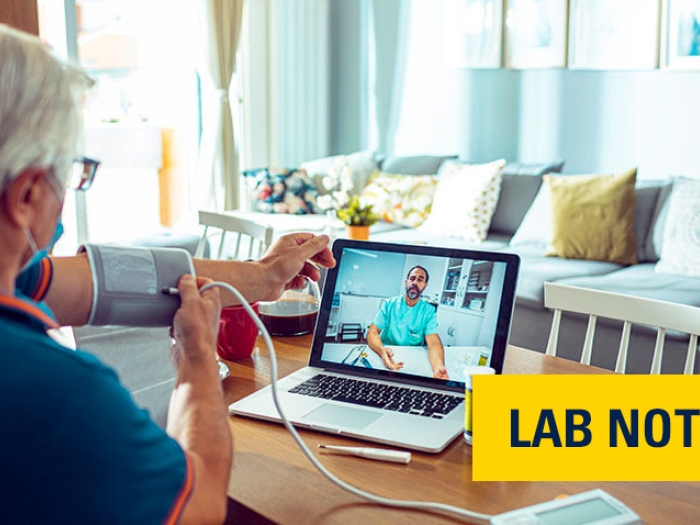Polls of teens and young adults taken before and during pandemic show most see the benefit of telemedicine, especially video and for minor ailments.
9:15 AM
Author |

They live on their smartphones, tablets and laptops. They're used to video chats with friends, online learning and apps for everything.
But even the digital natives of Generation Z still want to see their doctors and nurses in person, though the pandemic has shifted their attitudes more in favor of virtual visits.
That's according to a new study that looks at the attitudes of 14- to 24-year-olds toward telemedicine, using data from two national polls taken via text message in October 2019 and October 2020. It's published in Telemedicine and e-Health by the team that runs the MyVoice survey at the University of Michigan Department of Family Medicine.
Before the pandemic, only about 10% of young people had experienced a telemedicine visit with a health care provider, though 66% said they would be willing or probably willing to see a provider virtually.
But by fall of 2020, when the health care industry was months into an emergency pivot to telehealth brought on by the pandemic, 34% had had at least one virtual visit themselves. In all, just over half said that they or someone they knew had had a telehealth experience.
With this experience under their belt, the teens and young adults who answered the survey in 2020 had developed some clear opinions about telehealth. A full 68% said they would prefer to have virtual visits using a video connection, with only 23% preferring telephone only. Seeing their provider visually appealed to many because it allowed them to know they had the undivided attention of the health care professional, to have a more personal connection, or could show them something if needed. Those who preferred phone gave reasons such as being self-conscious on video, or just convenience.
Even with these preferences there was a strong current of wanting in-person visits in many cases, with 49% saying in October 2020 that they didn't feel virtual visits were as effective as in-person ones, 20% saying they were equally effective, and 16% saying it would depend on the situation. The lack of ability to take vital signs or do physical exams, or pick up on cues that are better seen in person, were all given as reasons.
"The most important thing we learned is that as telemedicine grows, it isn't going to be a one size fits all system, especially for tech savvy younger generations," said Marika Waselewski, M.P.H., MyVoice project coordinator and first author of the study. "We need to consider preferences for video versus phone, as well as types of health care being provided, in expanding access to telehealth for youth."
MyVoice is directed by Tammy Chang, M.D., M.P.H., M.S., an associate professor of family medicine. Aliya Hines, M.D., Ph.D., of Wayne State University, is the paper's senior author. Chang is an adolescent medicine specialist at Michigan Medicine, U-M's academic medical center, and a member of the U-M Institute for Healthcare Policy and Innovation.
Paper cited: "Perspectives on Telemedicine from a National Study of Youth in the United States," Telemedicine and e-Health. DOI: 10.1089/tmj.2021.0153

Explore a variety of health care news & stories by visiting the Health Lab home page for more articles.

Department of Communication at Michigan Medicine
Want top health & research news weekly? Sign up for Health Lab’s newsletters today!





